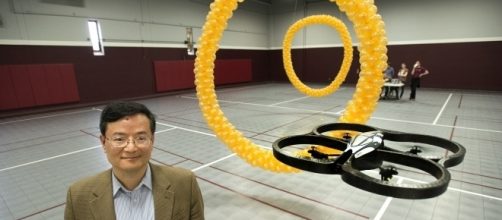One government agency has a developed a new technology to fight crime, but they can’t use it. Meanwhile, security tools to protect mobile devices are being largely ignored as new research shows that users are either unaware or just don’t care. Yet there are ambitious technologies in the pipeline that could bring order to the chaos of the Internet of Things (IoT) and give us the power to control drones with merely our brains. As a two-day conference in San Francisco demonstrated last week, the process of developing future technologies can be both deeply frustrating and wildly encouraging all at the same time.
FBI blocked from using DNA testing in the field
At the Future Technologies conference (organized by the Science and Information Organization), one of the keynote speakers was James Loudermilk, a senior-level technologist with the FBI. He spoke about the agency’s interest partnering with tech companies to build new tools that will fight crime.
One of those tools is a portable device that can analyze a suspect’s DNA and provide results, including whether there’s a match in the FBI’s global DNA database, within two hours. Known as Rapid DNA, these miniature labs have been pilot-tested by police departments in cities such as Tucson, Arizona. However, current federal law requires that DNA samples be processed only in an accredited lab and legislation to fix it has been mired in Congressional gridlock.
“This is an example where technology moves fast and policy doesn’t,” said the FBI’s Loudermilk.
The roadblocks facing technology advancement aren’t just in the policy end either. Several speakers at the San Francisco conference presented research papers which supported concerns that device security is more rumor than reality.
Wojciech Wodo, an academic researcher from Poland, presented survey results which showed that a significant majority of respondents had either turned-off device security controls, used absurdly simple passwords, or downloaded suspect apps and granted them full control of their device. Another researcher found in a survey of Indiana State students that most were either unaware of or didn’t care about their smart watch’s security.
Technology to control robots with our brains
Despite the current pitfalls of using tech devices, advanced research is providing a glimpse of the future where technology will be better organized and seamless to use. Conference attendees last week were given a hint of what this might look like in a presentation by Professor Bin He of the University of Minnesota. He has been working in the area of non-invasive brain-computer interfaces (BCI), and showed a video at the event where several of his headset-wearing students mentally guided the movements of a robotic arm as it picked up a cup and placed it on a shelf.
Professor He first demonstrated a mind-controlled drone three years ago and has continued to focus his research on the BCI field.
His presentation at the conference last week made it clear that broader application of mind-controlled technologies may not be far away.
Another problem in the tech industry has been the rapid rise of Internet-controlled (IoT) devices and an inability to properly manage the avalanche of data that streams from these products every second. “Even my grandmother’s bird feeder has a webcam now,” said Tammy Fuller, chief architect for Echo Messaging Systems, during a presentation at the conference.
Fuller’s company, through a technology branded as EchoWare, is seeking to give users more control over where and how all of that data is sent, using both artificial intelligence and geofencing to better handle IoT devices.
Fuller is also the co-developer of the Find Me Safety app that sends out an emergency alert just by shaking the smartphone.
Despite the obstacles faced by groups such as the FBI, there are new technologies on the way that will change much of what we have done in the past. And the challenge continues to make this technology both simple and secure.

